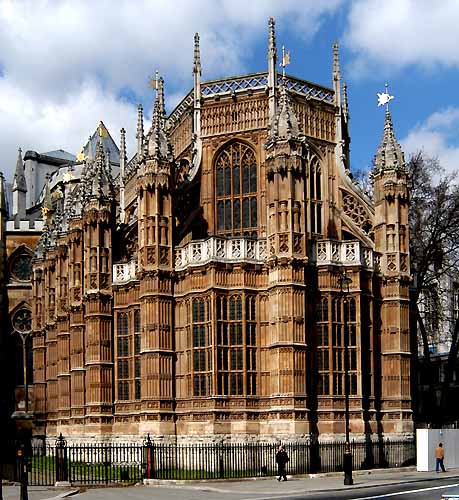Most analyses of the nineteenth-century Gothic revival in architecture have treated it as an essentially English phenomenon. This work is one of the few to consider the important parallel developments in Europe and thus set the movement in proper international perspective.
One interesting aspect of the Gothic revival is its development in notably different national ways. Dr. Germann examines the semantics of "Gothic" and "style" in Italian, French, and English and shows how each country's concept of style influenced the choice of particular Gothic modes and forms. In England the Gothic revival went hand in hand with liturgical revivals. French art historians saw the renewal of the Gothic style as a nationalistic tribute to a golden age in France's history. The Germans welcomed it as an opportunity for practical craft training. Contributions to the three key architectural journals of this period—The Ecclesiologist, the Annales archéologiques, and the Kölner Domblatt—are examined as evidence of the spirit behind the work.
No understanding of the Gothic revival would be complete without also putting it into historical perspective. Dr. Germann examines the events leading up to the Gothic revival, its beginnings, doctrinal aspects, eventual decline, and, finally, historical significance. His analysis looks forward to Gaudí and the Bauhaus as well as back to Vitruvius.
Although this book focuses primarily on the ideas of the period, rather than on specific works of architecture, there are 98 illustrations, including drawings and plans, depicting some of the principal buildings. There are also extensive footnotes and a thematic bibliographical index.
One interesting aspect of the Gothic revival is its development in notably different national ways. Dr. Germann examines the semantics of "Gothic" and "style" in Italian, French, and English and shows how each country's concept of style influenced the choice of particular Gothic modes and forms. In England the Gothic revival went hand in hand with liturgical revivals. French art historians saw the renewal of the Gothic style as a nationalistic tribute to a golden age in France's history. The Germans welcomed it as an opportunity for practical craft training. Contributions to the three key architectural journals of this period—The Ecclesiologist, the Annales archéologiques, and the Kölner Domblatt—are examined as evidence of the spirit behind the work.
No understanding of the Gothic revival would be complete without also putting it into historical perspective. Dr. Germann examines the events leading up to the Gothic revival, its beginnings, doctrinal aspects, eventual decline, and, finally, historical significance. His analysis looks forward to Gaudí and the Bauhaus as well as back to Vitruvius.
Although this book focuses primarily on the ideas of the period, rather than on specific works of architecture, there are 98 illustrations, including drawings and plans, depicting some of the principal buildings. There are also extensive footnotes and a thematic bibliographical index.
Most analyses of the nineteenth-century Gothic revival in architecture have treated it as an essentially English phenomenon. This work is one of the few to consider the important parallel developments in Europe and thus set the movement in proper international perspective.
One interesting aspect of the Gothic revival is its development in notably different national ways. Dr. Germann examines the semantics of "Gothic" and "style" in Italian, French, and English and shows how each country's concept of style influenced the choice of particular Gothic modes and forms. In England the Gothic revival went hand in hand with liturgical revivals. French art historians saw the renewal of the Gothic style as a nationalistic tribute to a golden age in France's history. The Germans welcomed it as an opportunity for practical craft training. Contributions to the three key architectural journals of this period—The Ecclesiologist, the Annales archéologiques, and the Kölner Domblatt—are examined as evidence of the spirit behind the work.
No understanding of the Gothic revival would be complete without also putting it into historical perspective. Dr. Germann examines the events leading up to the Gothic revival, its beginnings, doctrinal aspects, eventual decline, and, finally, historical significance. His analysis looks forward to Gaudí and the Bauhaus as well as back to Vitruvius.
Although this book focuses primarily on the ideas of the period, rather than on specific works of architecture, there are 98 illustrations, including drawings and plans, depicting some of the principal buildings. There are also extensive footnotes and a thematic bibliographical index.
One interesting aspect of the Gothic revival is its development in notably different national ways. Dr. Germann examines the semantics of "Gothic" and "style" in Italian, French, and English and shows how each country's concept of style influenced the choice of particular Gothic modes and forms. In England the Gothic revival went hand in hand with liturgical revivals. French art historians saw the renewal of the Gothic style as a nationalistic tribute to a golden age in France's history. The Germans welcomed it as an opportunity for practical craft training. Contributions to the three key architectural journals of this period—The Ecclesiologist, the Annales archéologiques, and the Kölner Domblatt—are examined as evidence of the spirit behind the work.
No understanding of the Gothic revival would be complete without also putting it into historical perspective. Dr. Germann examines the events leading up to the Gothic revival, its beginnings, doctrinal aspects, eventual decline, and, finally, historical significance. His analysis looks forward to Gaudí and the Bauhaus as well as back to Vitruvius.
Although this book focuses primarily on the ideas of the period, rather than on specific works of architecture, there are 98 illustrations, including drawings and plans, depicting some of the principal buildings. There are also extensive footnotes and a thematic bibliographical index.

















No comments:
Post a Comment